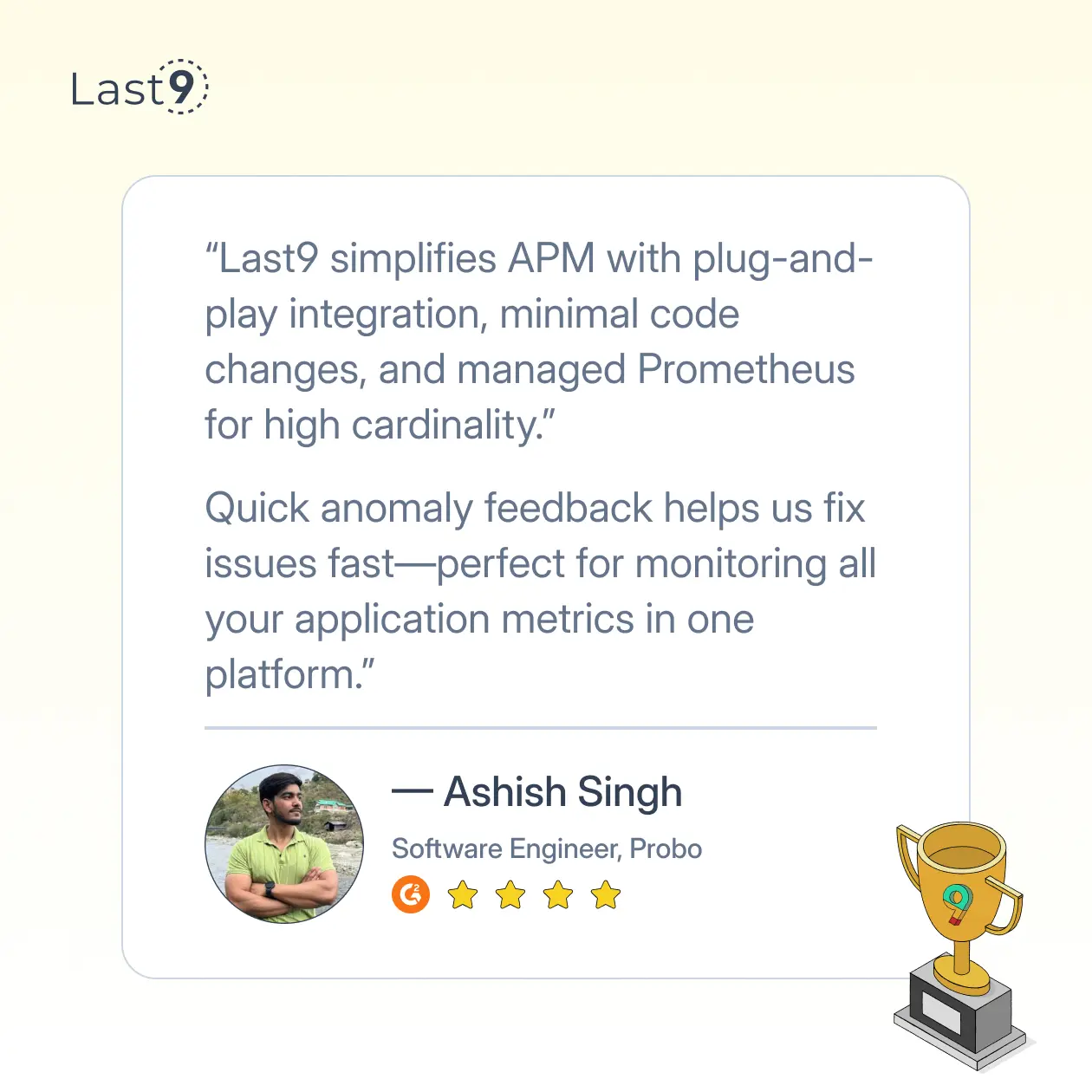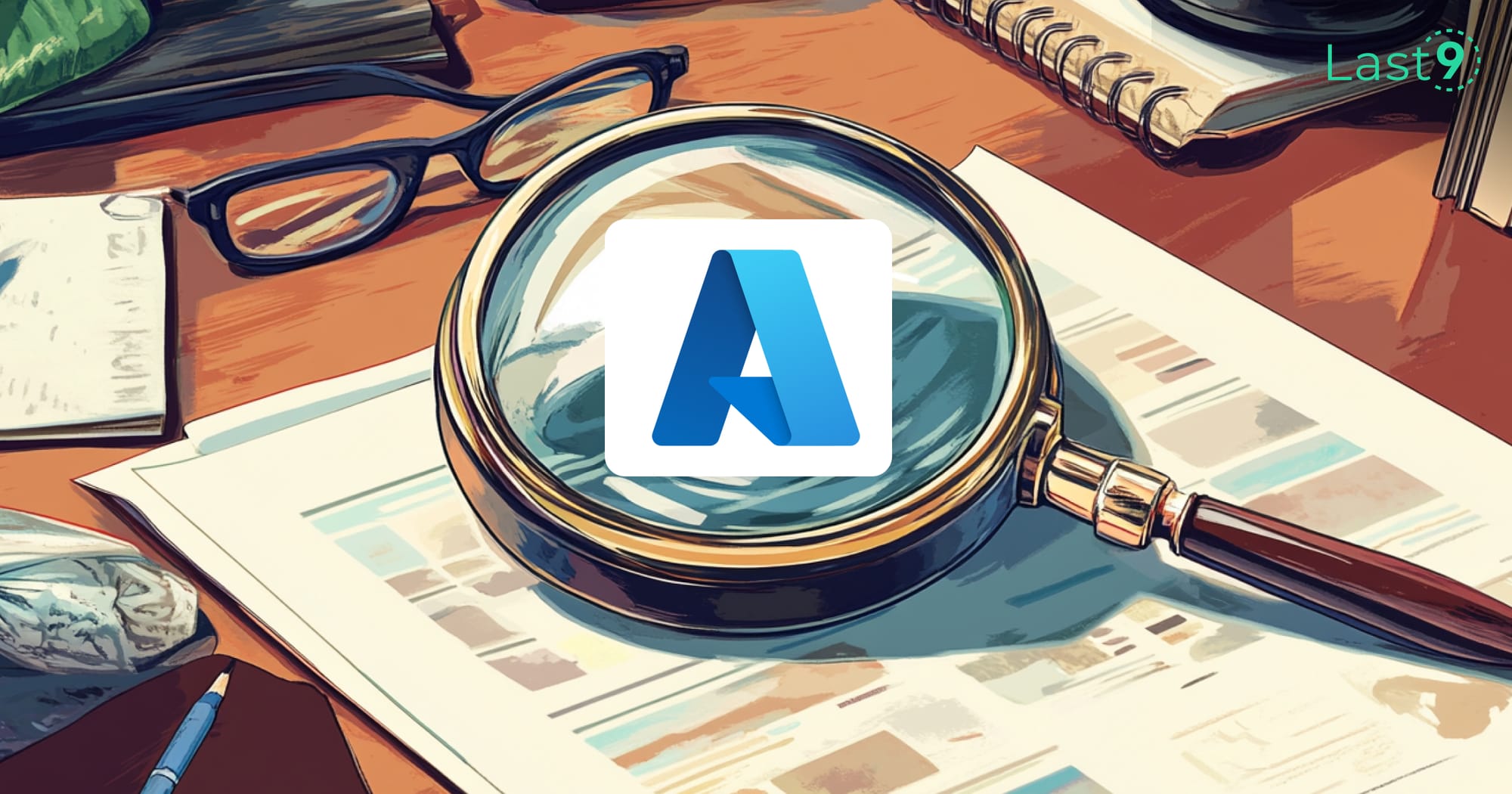Observability in Azure isn’t just about tracking metrics—it’s about truly understanding how your cloud infrastructure, applications, and services are performing. It helps you spot issues before they become problems, optimize performance, and ensure security.
In this guide, we’ll break down Azure Observability in a way that’s easy to follow, covering key concepts, best practices, and some useful tricks to give you an edge.
What is Azure Observability?
At its core, Azure Observability is about knowing what’s happening across your Azure environment. It relies on three main pillars:
- Metrics – These are the numbers that tell you how your system is doing, like CPU usage, memory consumption, or network latency.
- Logs – Think of these as detailed records of events, errors, and activities within your apps and infrastructure. They help you track down what went wrong and why.
- Traces – These provide an end-to-end view of how requests move through your system, helping you pinpoint performance bottlenecks and slowdowns.
With the right observability approach, you’re not just reacting to issues—you’re anticipating and preventing them. Let’s understand them.
Why Observability Matters in Azure
Many organizations struggle with unpredictable downtime, performance bottlenecks, and security vulnerabilities in the cloud. Without clear visibility into what’s happening under the hood, troubleshooting can be slow and costly.
A strong observability strategy helps you:
- Detect and resolve issues faster – Reduce Mean Time to Detection (MTTD) and Mean Time to Resolution (MTTR).
- Optimize costs and resources – Identify inefficiencies and prevent over-provisioning.
- Enhance security and compliance – Monitor for anomalies and meet regulatory requirements.
- Improve reliability and user experience – Keep applications running smoothly with fewer disruptions.
With Azure’s scale and complexity, traditional monitoring tools alone aren’t enough. Achieving true observability requires a holistic approach that provides deep, actionable insights.
5 Azure Observability Tools and Services
Azure offers a range of observability services, each designed to give you deeper insights into your applications, infrastructure, and security. Let’s break them down.
Azure Monitor:
Azure Monitor is at the core of Azure’s observability ecosystem. It collects and analyzes telemetry data from your applications, infrastructure, and networks, helping you track performance, detect issues, and optimize resources.
Key components of Azure Monitor:
- Application Insights – Helps you monitor application performance, track dependencies, and analyze user behavior.
- Log Analytics – A powerful logging system that allows you to centralize logs and query them using This lets
- Azure Metrics – Real-time performance tracking for CPU, memory, network, and more.
- Distributed Tracing – This lets you follow a transaction’s journey across microservices to pinpoint performance bottlenecks.
Azure Log Analytics & Kusto Query Language (KQL)
Logs are critical for troubleshooting and proactive monitoring, and Azure Log Analytics makes it easy to search and analyze them. Kusto Query Language (KQL) is the secret sauce—it allows you to run powerful queries to detect anomalies and uncover system inefficiencies.
Example Query to Detect Unusual Traffic Spikes:
requests
| where timestamp > ago(24h)
| summarize count() by bin(timestamp, 5m)
| render timechartThis query checks request logs over the past 24 hours, grouping them into five-minute intervals, and then visualizes the results in a time chart—helpful for spotting sudden traffic surges.
Azure Application Insights:
If you're a developer, Azure Application Insights is one of the most powerful tools at your disposal. It helps you:
- Monitor API response times to ensure smooth performance.
- Identify performance bottlenecks within your application.
- Set up proactive alerts to catch anomalies before users notice them.
Azure Sentinel:
Security is a critical part of observability, and Azure Sentinel is Azure’s cloud-native SIEM (Security Information and Event Management) solution.
It helps you detect, prevent, and investigate security threats across your Azure and hybrid environments.
Why Azure Sentinel matters:
- AI-powered threat detection – Uses machine learning to identify potential security threats before they escalate.
- Correlates security signals – Aggregates logs from multiple services to provide a unified security overview.
- Automated response playbooks – Enables quick, pre-defined actions in response to detected threats.
OpenTelemetry in Azure:
For organizations using a multi-cloud or hybrid environment, OpenTelemetry offers a vendor-neutral observability solution. It seamlessly integrates with Azure Monitor to capture:
- Distributed traces – Follow requests across services, even outside of Azure.
- Custom metrics – Define and collect metrics specific to your business needs.
- Logs from non-Azure services – Bring all your logs into one place, even from on-prem or third-party platforms.
Advanced Observability Strategies in Azure
As your Azure environment grows, so does the complexity of monitoring it effectively. A solid observability strategy should not only provide deep insights but also remain cost-efficient and seamlessly integrate with your DevOps workflows.
Let’s explore some advanced techniques.
Cost-Effective Observability in Azure
Observability can quickly become expensive if you're collecting and storing excessive data without a strategy. Here’s how to keep costs under control while still gaining meaningful insights:
- Set data retention policies – Not all logs need to be stored forever. Keep critical logs for extended periods while setting expiration policies for less important data.
- Filter and sample logs – Instead of collecting every single telemetry event, focus on key logs and sample non-critical data. This reduces storage costs while still providing valuable insights.
- Use reserved capacity pricing – If your usage is predictable, committing to reserved capacity for services like Log Analytics can significantly lower costs compared to pay-as-you-go pricing.
Integrating Azure Observability with DevOps
Observability isn’t just for ops teams—it’s a crucial part of DevOps. When done right, it helps teams work together more effectively, catch issues before they escalate, and keep systems running smoothly.
Here’s how you can make observability a natural part of your DevOps workflow:
- Automate alerting and incident response – Use Azure Monitor with Logic Apps to automate responses, such as restarting a failing service or notifying the right team.
- Embed observability in CI/CD pipelines – Monitor deployments in real time and catch performance regressions before they reach production.
- Define SLIs and SLOs – Establish Service Level Indicators (SLIs) and Service Level Objectives (SLOs) to measure system health and ensure reliability.
How Does Azure Monitor Pricing Work
Azure Monitor follows a pay-as-you-go pricing model, meaning costs are based on the volume of data ingested, stored, and queried. Businesses should consider several factors when estimating expenses.
Data Ingestion Costs
Azure Monitor charges based on the amount of log data ingested. The cost depends on the data source, such as Azure services, virtual machines, or applications, and whether basic or premium logs are used. Organizations can reduce costs by filtering unnecessary data before ingestion.
Log Data Retention and Storage
Logs stored in Azure Monitor incur costs based on the retention period. The first 31 days of retention are free, but extending the retention period increases costs. Businesses can archive logs to Azure Storage for long-term retention at lower costs.
Query and Analysis Costs
Executing queries in Log Analytics incurs processing charges, especially for complex queries across large datasets. Frequent querying and dashboards that refresh in real time contribute to overall costs.
Alerting and Notifications
Azure Monitor supports metric-based and log-based alerts. While basic metric alerts are free, advanced alerting features, such as multi-condition logic and SMS/email notifications, come with additional costs.
Application and Infrastructure Monitoring
Using Azure Monitor for Application Insights or VM monitoring generates costs based on telemetry data volume. Reducing unnecessary telemetry, sampling data, or setting custom retention policies can help optimize costs.
Cost Optimization Strategies
- Set data collection rules (DCRs) to filter out redundant logs before ingestion.
- Use sampling to control the volume of telemetry data sent to Application Insights.
- Optimize alert rules to minimize unnecessary notifications.
- Use Azure Cost Management to track and manage monitoring expenses.
Pricing Calculator and Free Tier
Microsoft provides an Azure Pricing Calculator to estimate costs based on usage patterns. Additionally, Azure Monitor offers a free tier with limited ingestion and retention, allowing businesses to test capabilities before scaling up.
For precise pricing details, refer to the official Azure Monitor pricing page.
How to Choose the Right Azure Account
Picking the right Azure account isn’t just about signing up—it’s about making sure it fits your business needs, budget, and long-term goals. If you're a startup testing the waters or an enterprise looking for scalability, here's how to make the right choice.
Identify Your Business Needs
Before jumping into Azure, think about what you need it for. Are you running web apps, managing large databases, or building AI models?
Here are some key questions to ask yourself:
- What type of workloads will you be running? (Web apps, databases, AI/ML, IoT)
- How much scalability do you need? (Small startup, growing business, or global expansion)
- Do you have compliance requirements? (HIPAA, GDPR, ISO 27001)
Having clarity on these factors will help narrow down the best Azure account type for you.
Choose the Right Azure Subscription
Azure offers different subscription models, and the right one depends on how you plan to use the platform. Here are the main options:
- Pay-As-You-Go – Great if you want flexibility without long-term commitments.
- Enterprise Agreement (EA) – Ideal for large organizations looking for volume discounts.
- Microsoft Customer Agreement (MCA) – Best for businesses managing multiple Azure services with predictable usage.
- Azure Free Account – Perfect for new users who want to experiment with Azure, including 750 hours of free VM usage for 12 months.
If you're just getting started, the free account is a great way to explore Azure’s capabilities before committing to a paid plan.
Pick the Right Microsoft Cloud Solution
Azure isn’t one-size-fits-all. Depending on your business needs, different solutions might be a better fit:
- Azure Virtual Machines and Compute Services – If you need to run applications or virtual desktops.
- Azure SQL Database and Storage – For businesses that rely on data management and analytics.
- Azure AI and Machine Learning – If you're building AI-driven applications.
- Hybrid and Multi-Cloud Solutions – Ideal for companies that need to integrate Azure with on-premises systems using Azure Arc.
Think about what matters most to your business, and choose services that align with your goals.
Manage Accounts and Control Access
Security and access control should be a priority from day one. Azure Active Directory (Azure AD) makes it easy to manage user identities and access permissions. Role-based access control (RBAC) ensures that only the right people have access to sensitive data and resources.
Keep Costs Under Control
No one likes unexpected cloud bills, so it’s important to keep an eye on your Azure spending. Here’s how to stay on top of costs:
- Use the Azure Pricing Calculator to estimate costs before deploying services.
- Monitor spending with Azure Cost Management and Billing to avoid surprises.
- Consider Reserved Instances (RIs) if you have predictable workloads—you can save significantly by committing to a longer-term plan.
Understand Support and SLAs
If your business relies on Azure, make sure you have the right support level in place:
- Azure Basic Support – Free with all accounts, good for general use.
- Azure Standard/Premium Support – Faster response times and more hands-on guidance.
- Service Level Agreements (SLAs) – Ensures uptime and performance commitments for critical workloads.
Get Started with Azure
If you’re new to Azure, the best way to start is with a free account. This lets you test services before committing to a paid plan. For enterprises, working with Microsoft partners or cloud architects can help you build a strategy that fits your needs.
5 Tools for Azure Observability
Choosing the right observability tool keeps your Azure workloads running efficiently. From open-source solutions to cloud-native platforms and enterprise-grade monitoring, these five tools help you improve performance, security, and reliability.
1. Prometheus & Grafana (Open-Source)
If you prefer open-source solutions, Prometheus and Grafana offer a powerful combination for Azure observability.
- Prometheus collects and stores time-series metrics, making it great for real-time monitoring.
- Grafana provides customizable dashboards to visualize Prometheus metrics.
- Can be integrated with Azure Monitor to collect and display Azure resource metrics.
- Works well with Kubernetes and containerized environments.
Best for: Developers and teams looking for a cost-effective, open-source observability stack.
2. Last9 (Otel-native, Single Pane and Cost-Effective)
Last9 is a powerful observability platform designed to optimize cloud-native monitoring while balancing performance, cost, and user experience.
Trusted by industry leaders like Disney+ Hotstar, Games24x7, CleverTap, and Replit, it helps teams unify and analyze telemetry data efficiently.
- Seamless OpenTelemetry & Prometheus Integration – Collects and processes high-cardinality metrics, logs, and traces.
- Smart Alerting & Real-Time Metrics – Provides actionable insights through its advanced Control Plane.
- Cost-Optimized Monitoring – Manages telemetry data intelligently to reduce unnecessary overhead.
- Scalable Cloud-Native Support – Works across Azure, Kubernetes, and multi-cloud environments.
Best for: Engineering teams looking for deep observability, operational intelligence, and cost-efficient telemetry data management.

3. Datadog (Comprehensive Cloud & Security Monitoring)
Datadog is an enterprise-grade observability tool that provides full-stack monitoring for Azure environments.
- Infrastructure & Application Monitoring – Tracks VM performance, databases, and cloud services.
- Security Observability – Identifies security threats with anomaly detection.
- Log Management & APM – Correlates logs, traces, and metrics for faster issue resolution.
- AI-Powered Insights – Uses machine learning for anomaly detection and predictive analytics.
Best for: Enterprises needing a single-pane-of-glass solution for infrastructure, security, and application monitoring.
4. New Relic (Performance-Focused APM & Observability)
New Relic is designed for deep application performance monitoring (APM) with built-in observability for Azure workloads.
- Real-Time Tracing & APM – Helps detect performance bottlenecks in Azure-hosted applications.
- Distributed Tracing – Tracks requests across microservices and hybrid cloud environments.
- Custom Dashboards – Allows teams to build tailored views for Azure services.
- Alerts & Anomaly Detection – Uses AI to detect unusual patterns in system performance.
Best for: DevOps teams and engineers looking for in-depth application performance insights.
5. Splunk Observability (Enterprise-Grade Log Analytics & Security)
Splunk Observability provides a robust analytics and security observability platform for Azure users.
- Log Management & Search – Ingests and analyzes massive amounts of Azure logs.
- Infrastructure Monitoring – Provides full visibility into VMs, containers, and cloud services.
- Security & Compliance – Detects threats and ensures regulatory compliance.
- Customizable Dashboards & AI Insights – Offers advanced analytics powered by AI.
Best for: Large enterprises needing deep log analysis, security observability, and compliance tracking.
Final Thoughts
A well-implemented Azure observability strategy helps maintain reliability, security, and cost efficiency.
Finding the right tools can make a big difference, and if you’re looking for a smarter, more cost-effective way to manage observability, Last9 is worth exploring.
You can try it out with a free trial or schedule a demo to learn more.



